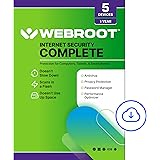Investing Options
Investing in the financial markets can seem overwhelming, with a wide array of investment options available. Two popular choices for individual investors are Exchange-Traded Funds (ETFs) and Mutual Funds. These investment vehicles provide diversification, professional management, and convenience. In this guide, we will explore ETFs and Mutual Funds, explaining their key characteristics, benefits, and differences, all in easily understandable terms.

I. What are ETFs?
Exchange-Traded Funds, commonly known as ETFs, are investment funds that are traded on stock exchanges, just like individual stocks. ETFs are designed to track the performance of a specific index, such as the S&P 500 or a sector index, by holding a diversified portfolio of assets. Here are some key features of ETFs:
- Structure: ETFs are structured as open-end investment companies or unit investment trusts. They issue shares that represent an ownership interest in the underlying assets held by the fund.
- Diversification: ETFs offer instant diversification by holding a basket of assets, which can include stocks, bonds, commodities, or other securities. This diversification helps to spread risk across multiple holdings.
- Trading: ETFs trade on stock exchanges throughout the trading day. Investors can buy or sell ETF shares at market prices, similar to stocks. This provides liquidity and flexibility to investors who want to enter or exit their positions quickly.
- Lower Costs: ETFs generally have lower expense ratios compared to mutual funds, as they often passively track an index and don’t require active management. This cost efficiency can result in higher net returns for investors.
II. Understanding Mutual Funds:
Mutual Funds are investment vehicles that pool money from multiple investors to invest in a diversified portfolio of securities. They are managed by professional fund managers who make investment decisions on behalf of the investors. Let’s delve into the key aspects of Mutual Funds:
- Structure: Mutual Funds are typically structured as open-end investment companies. They issue shares to investors, and the number of shares fluctuates based on investor demand. Mutual Funds can be categorized into various types, such as equity funds, bond funds, balanced funds, and sector-specific funds.
- Professional Management: Mutual Funds are actively managed by professional fund managers who analyze market trends, select securities, and adjust the fund’s holdings based on their investment strategies. The manager’s goal is to outperform the market or a specific benchmark.
- Diversification: Similar to ETFs, Mutual Funds offer diversification by investing in a wide range of assets. This helps to mitigate the risk associated with individual securities. Mutual Funds can hold a mix of stocks, bonds, cash, or other assets depending on their investment objectives.
- Pricing and Trading: Mutual Funds are priced at the end of each trading day based on the net asset value (NAV) per share. Investors buy or sell shares at the NAV price, which reflects the fund’s underlying assets’ value. Mutual Fund transactions are processed once a day after the market closes.
- Expense Ratio: Mutual Funds typically have higher expense ratios compared to ETFs, as they involve active management and often incur higher administrative costs. These expenses cover the fund’s operating costs, such as management fees, administrative fees, and marketing expenses.
III. Key Differences:
While both ETFs and Mutual Funds offer diversification and professional management, there are some notable differences between them:
- Trading: ETFs trade throughout the day, similar to stocks, while Mutual Funds are priced and traded once a day after the market closes.
- Cost Structure: ETFs generally have lower expense ratios due to passive management, while Mutual Funds tend to have higher expense ratios because of active management and administrative costs.
- Investment Styles: ETFs often passively track an index’s performance, aiming to replicate its returns, while Mutual Funds are actively managed, with the fund manager making investment decisions based on their strategies and objectives.
- Taxes: ETFs are structured in a way that makes them more tax-efficient compared to Mutual Funds. ETF investors typically realize capital gains or losses when they sell their shares, whereas Mutual Fund investors can be subject to capital gains taxes even without selling their shares due to the fund’s internal trading.
Which is best?
ETFs and Mutual Funds are popular investment choices due to their diversification benefits and professional management. ETFs offer flexibility, intraday trading, and lower expenses, while Mutual Funds provide active management and daily pricing. Understanding the differences and considering individual investment goals, risk tolerance, and time horizons can help investors make informed decisions when choosing between these two investment vehicles. The choice is yours for which is best for your investing goals. As always, it is recommended to consult with a financial advisor or do thorough research before making any investment decisions.











